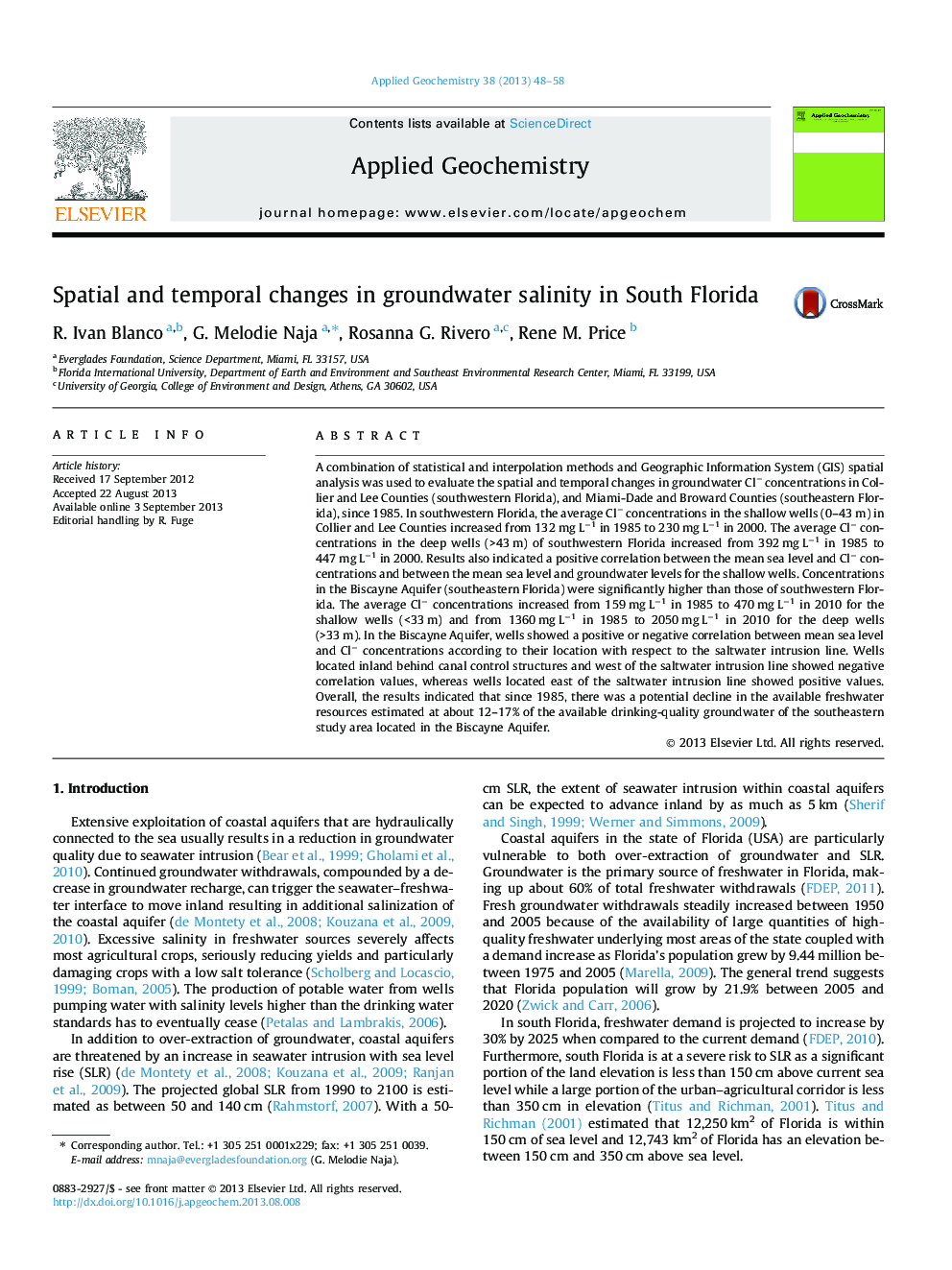| کد مقاله | کد نشریه | سال انتشار | مقاله انگلیسی | نسخه تمام متن |
|---|---|---|---|---|
| 4435906 | 1620253 | 2013 | 11 صفحه PDF | دانلود رایگان |

• In SW Florida shallow wells, chloride levels increased from 132 to 230 mg L−1 (1985–2000).
• In SW Florida deep wells, chloride levels increased from 392 to 447 mg L−1 (1985–2000).
• In SE Florida shallow wells, chloride levels increased from 159 to 470 mg L−1 (1985–2010).
• In SE Florida deep wells, chloride levels increased from 1360 to 2050 mg L−1 (1985–2010).
• Since 1985, the available drinking groundwater in the study area decreased by 12–17%.
A combination of statistical and interpolation methods and Geographic Information System (GIS) spatial analysis was used to evaluate the spatial and temporal changes in groundwater Cl− concentrations in Collier and Lee Counties (southwestern Florida), and Miami-Dade and Broward Counties (southeastern Florida), since 1985. In southwestern Florida, the average Cl− concentrations in the shallow wells (0–43 m) in Collier and Lee Counties increased from 132 mg L−1 in 1985 to 230 mg L−1 in 2000. The average Cl− concentrations in the deep wells (>43 m) of southwestern Florida increased from 392 mg L−1 in 1985 to 447 mg L−1 in 2000. Results also indicated a positive correlation between the mean sea level and Cl− concentrations and between the mean sea level and groundwater levels for the shallow wells. Concentrations in the Biscayne Aquifer (southeastern Florida) were significantly higher than those of southwestern Florida. The average Cl− concentrations increased from 159 mg L−1 in 1985 to 470 mg L−1 in 2010 for the shallow wells (<33 m) and from 1360 mg L−1 in 1985 to 2050 mg L−1 in 2010 for the deep wells (>33 m). In the Biscayne Aquifer, wells showed a positive or negative correlation between mean sea level and Cl− concentrations according to their location with respect to the saltwater intrusion line. Wells located inland behind canal control structures and west of the saltwater intrusion line showed negative correlation values, whereas wells located east of the saltwater intrusion line showed positive values. Overall, the results indicated that since 1985, there was a potential decline in the available freshwater resources estimated at about 12–17% of the available drinking-quality groundwater of the southeastern study area located in the Biscayne Aquifer.
Journal: Applied Geochemistry - Volume 38, November 2013, Pages 48–58